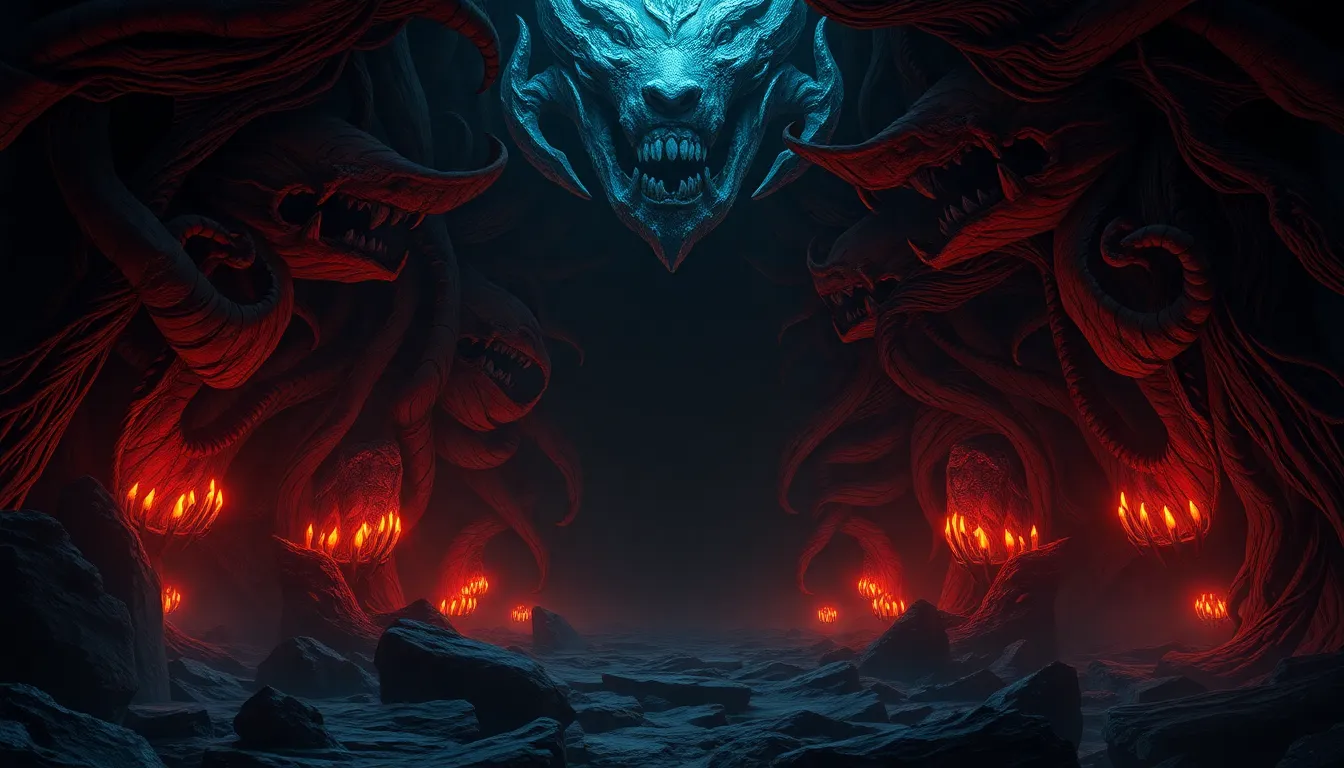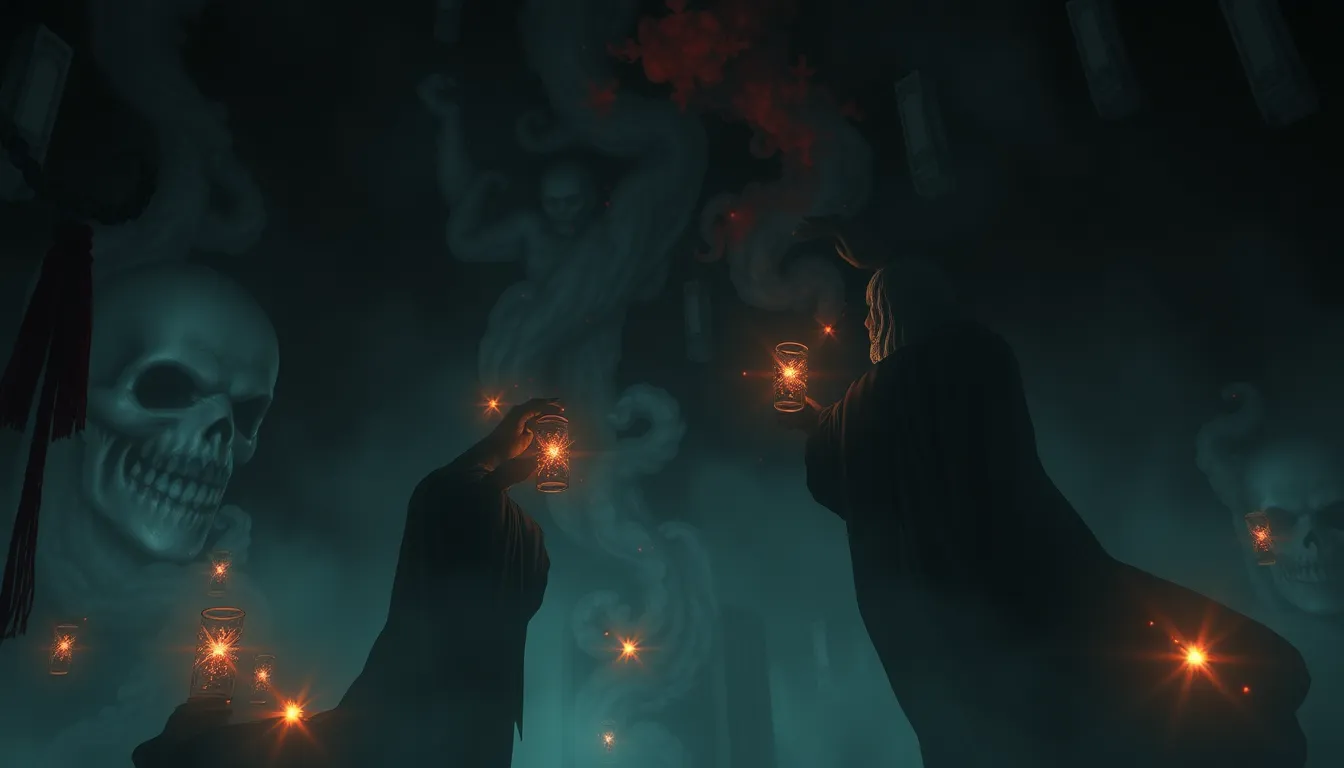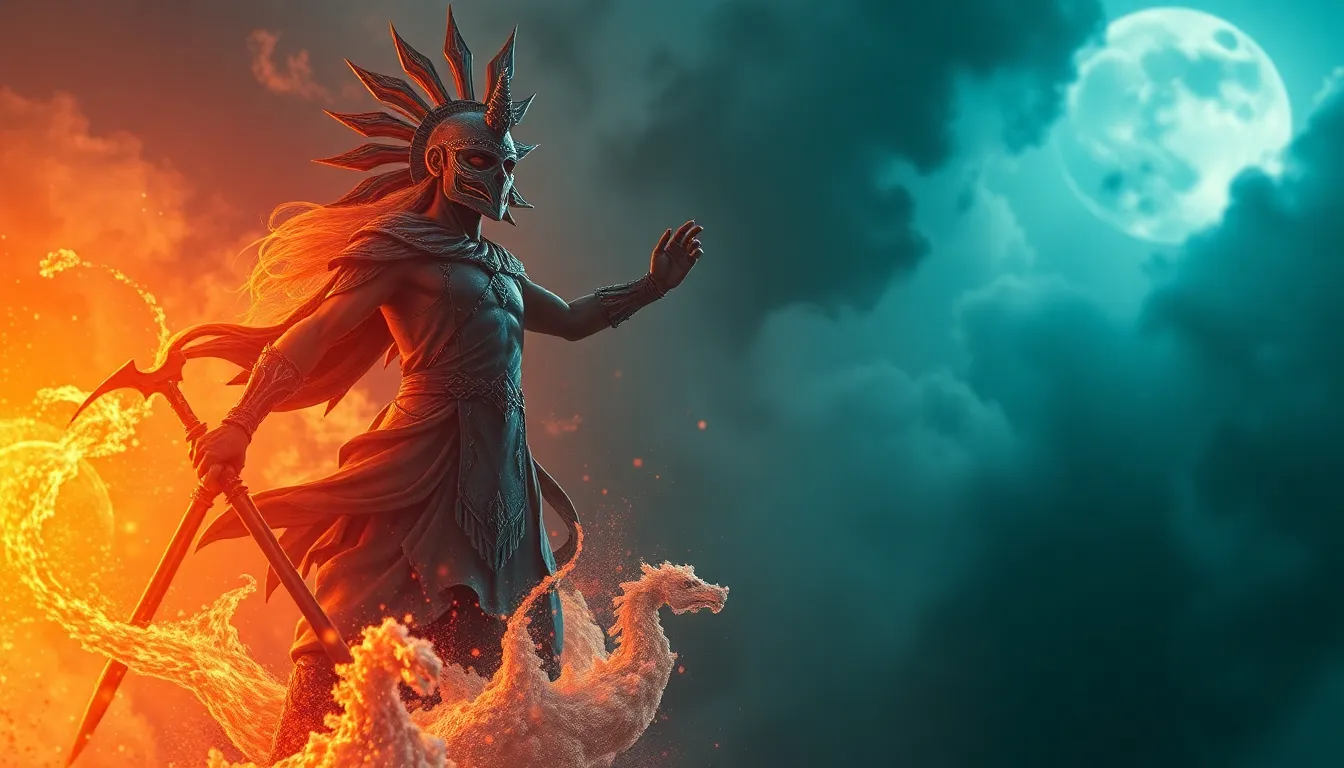The Underworld: A Mythical Exploration of Fear and Fascination
Introduction: The Allure of the Underworld
The concept of the Underworld is a profound and multifaceted theme that pervades various mythologies around the globe. Often defined as a realm where the souls of the deceased reside, it serves as a critical component in cultural narratives that address the nature of life and death. The Underworld encapsulates a duality of fear and fascination; it is both a terrifying place of judgment and punishment, yet also a realm that offers insight into the mysteries of existence.
Historical Context: The Roots of Underworld Myths
Throughout history, civilizations have held diverse beliefs regarding the afterlife, which have significantly shaped the concept of the Underworld. From the ancient Egyptians to the Greeks, the Underworld has evolved as a reflection of societal values and fears surrounding death.
- Ancient Civilizations: Cultures such as the Egyptians, Greeks, and Mesopotamians developed intricate beliefs about the afterlife, often depicting the Underworld as a place of judgment.
- Key Historical Figures: Figures like Homer, Plato, and various religious leaders contributed to the literary and spiritual narratives surrounding the Underworld.
- Evolution: As societies progressed, the Underworld concept adapted, incorporating new ideas about morality, justice, and the human experience.
Cultural Representations: Underworlds Across Civilizations
Underworld mythology varies significantly across different civilizations, each offering unique interpretations and stories that reflect their cultural values.
Greek Mythology
In Greek mythology, the Underworld is ruled by Hades, a god associated with death and the afterlife. Notable characters include:
- Persephone: The queen of the Underworld, whose annual return to the surface symbolizes the cycle of life and death.
- The River Styx: A boundary that souls must cross to enter the Underworld, often depicted as a dark and murky river.
Egyptian Mythology
The Egyptians viewed the Underworld as a complex landscape governed by Osiris, the god of the afterlife. Key elements include:
- Anubis: The god of mummification and the protector of graves, who guides souls in the afterlife.
- The Judgment of the Dead: A significant ritual where the heart of the deceased is weighed against the feather of Ma’at, symbolizing truth and justice.
Mesopotamian Myths
In Mesopotamian mythology, the Underworld is portrayed in the Epic of Gilgamesh, where it is described as a dreary and desolate place, reflecting the civilization’s views on mortality.
Archetypes and Symbolism: The Underworld as a Metaphor
The Underworld serves as a profound metaphor for various aspects of the human experience, particularly the subconscious mind. It embodies themes of death, rebirth, and transformation.
- The Hero’s Journey: Many myths depict a hero venturing into the Underworld, facing trials that lead to personal growth and enlightenment.
- Symbolism: The Underworld symbolizes not only death but also the potential for renewal and the continuous cycle of life.
Fear as a Catalyst: Psychological Implications of the Underworld
Fear plays a pivotal role in shaping narratives about death and the afterlife. It influences cultural practices and individual perceptions of the Underworld.
- Fear in Narratives: Stories of the Underworld often evoke fear, reinforcing moral lessons and societal norms.
- Cultural Rituals: Many cultures incorporate rituals that address fears surrounding death, using the Underworld as a focal point for these practices.
- Psychological Impact: Underworld myths can have profound psychological effects, shaping how individuals and societies cope with mortality.
Fascination with the Underworld: Art, Literature, and Media
The Underworld has been a source of inspiration in art, literature, and media, captivating audiences with its complex themes.
- Classical Literature: Works like Virgil’s Aeneid and Dante’s Inferno explore the Underworld, offering rich narratives that delve into morality and the afterlife.
- Artistic Interpretations: Artists throughout history have depicted the Underworld through paintings, sculptures, and performances, each capturing its eerie beauty.
- Modern Media: Films and video games often portray the Underworld, reimagining its themes to resonate with contemporary audiences.
Rituals and Practices: Navigating the Underworld in Human Culture
Rituals surrounding death and the Underworld are integral to human culture, providing a framework for the living to navigate grief and loss.
- Burial Practices: Different cultures have unique burial customs that reflect their beliefs about the Underworld and the afterlife.
- Significance of Rituals: Rituals help the living cope with death, serving as a bridge between worlds.
- Cross-Cultural Comparisons: While practices vary, common themes of honoring the dead and appeasing the Underworld persist across cultures.
Modern Interpretations: The Underworld in Today’s Society
In contemporary society, the Underworld continues to hold relevance, influencing spirituality and psychological perspectives.
- Relevance in Spirituality: Many modern spiritual practices draw on Underworld myths to explore concepts of life, death, and the afterlife.
- Psychological Interpretations: Modern psychology often interprets the Underworld as a manifestation of our fears, hopes, and the human condition.
- Reflection of Society: The Underworld serves as a mirror for societal fears and aspirations, revealing underlying values and beliefs.
The Underworld and Environmental Concerns: A New Perspective
In recent discourse, the Underworld has been reimagined as a metaphor for ecological destruction and environmental degradation. This new perspective highlights the interconnectedness of life and death, urging humanity to consider the consequences of its actions on the planet.
- Ecological Destruction: The Underworld can symbolize the damage inflicted on the earth, serving as a warning against unsustainable practices.
- Interconnectedness: Recognizing the Underworld as part of a larger ecological cycle encourages a deeper respect for nature.
Conclusion: Embracing the Underworld’s Complexity
The Underworld remains a captivating and complex aspect of human mythology, embodying a rich tapestry of beliefs about life, death, fear, and hope. As societies continue to evolve, the Underworld will undoubtedly adapt, serving as a powerful symbol that invites exploration and reflection on our deepest existential questions.


